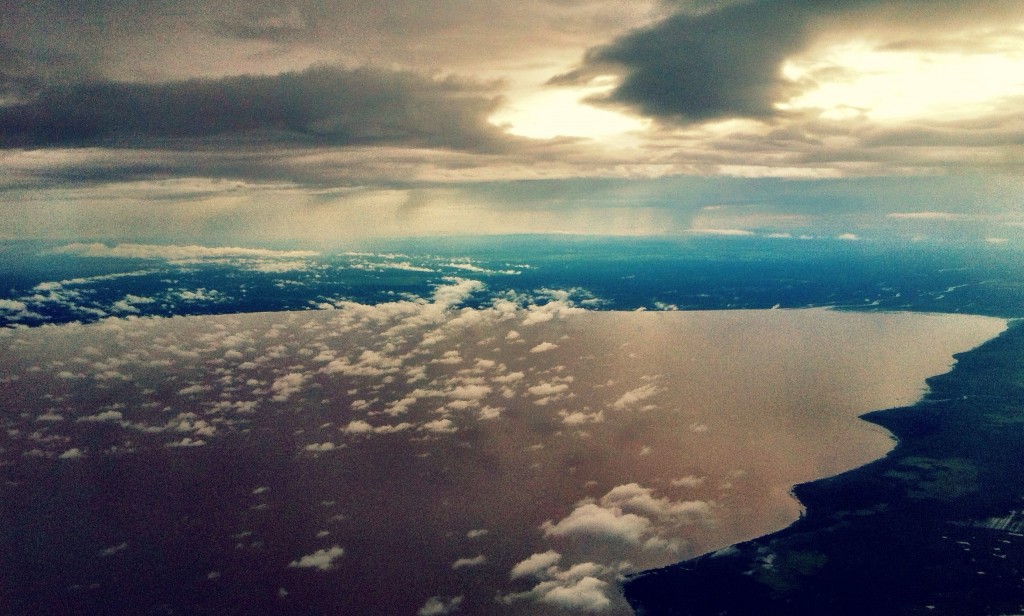
Flight over spectacular Tonle Sap, Cambodia – largest freshwater lake in SE Asia. Photo by Paul Williams, taken on 12 July 2012. Licensed under CC BY-ND 2.0.
Representing significant value to the public, state public land is protected under Cambodian law. The use of state public land is constrained and it cannot be allocated for economic land concessions, with the objective of preserving the land’s public interest value. Yet, according to NGO reports, much state public land has been reclassified as state private land and exploited by private entities.1
State public land comprises all lands that have a public interest value. This includes land of natural origin (e.g. rivers, lakes and mountains), property that is specially developed for public use (e.g. ports, railways and airports), property that is made available for public use (e.g. roads, pathways and public parks), property allocated to provide a public service (e.g. schools, hospitals and administrative buildings), protected areas, archaeological and historical sites, and official properties of the Royal Family.2
State public land is inalienable as long as it has a public interest.3 There are limited conditions under which state public land may be leased, and it cannot be sold, exchanged, transferred or otherwise disposed of. The purpose for which the property is leased must not change or damage the property or its existing usage or public service function.4 In addition, state public land cannot be leased for more than 15 years.5 The state may withdraw the lease at any time to protect the property and preserve its public interest.
If state public land is deemed to have lost its public interest value or service function, or if it is no longer directly used by the public, it can be reclassified as state private land.6 However, for that to happen, state public land must be registered in the state inventory. Royal Decree No. 339 on Provisional Guidelines and Principles Regarding the Reclassification of State Public Properties and of Public Entities states that reclassification is effective by sub-decree.7
Despite restrictions on the use and alienation of state public land, the Special Representative of the Secretary-General for Human Rights in Cambodia has reported that state public land has been granted to private entities. Particular attention was called to tracts of forestland granted as economic land concessions to investors in the agro-industrial sector.8 Given that more than 850,000 hectares of state public land were reclassified between 2008 and 2013, reclassification of state public land to state private land has been deemed arbitrary by some NGOs.9 ADHOC has stated that multiple protected areas have been reclassified.10 The NGO also claims that a common practice among concessionaires is to clear-fell forest in protected areas and then ask the government to reclassify the land.11 Such reclassifications raise concerns among civil society about deforestation and the preservation of Cambodia’s natural resources.
Related to state public land
Last updated: 7 August 2015
References
- 1. Cambodian Center for Human Rights. 2013. “Cambodia: Land in Conflict – An Overview of the Land Situation.” http://cchrcambodia.org/admin/media/report/report/english/CCHR%20Report%20%20Cambodia % 20Land%20in%20Conflict%20An%20Overview%20of%20the%20Land%20Situation%20ENG.pdf.
- 2. Constitution of the Kingdom of Cambodia 1993, Article 58; Land Law 2001, Articles 12 and 15; Sub-decree No.129 on Rules and Procedures on Reclassification of State Public Properties and Public Entities (2006), Article 3.
- 3. Land Law 2001, Article 16.
- 4. Sub-decree No. 129 on Rules and Procedures on Reclassification of State Properties (2006), Article 16.
- 5. Ibid, Article 18.
- 6. Royal Decree No.339 (2006) on Provisional Guidelines and Principals Regarding the Reclassification of the State Public Properties and of Public entities.
- 7. Ibid.
- 8. Special Representative of the Secretary-General for Human Rights in Cambodia. 2007. Economic Land Concessions in Cambodia: A Human Perspective. Phnom Penh: OHCHR. http://cambodia.ohchr.org/WebDOCs/DocReports/2-Thematic-Reports/Thematic_CMB12062007E.pdf.
- 9. Cambodian Center for Human Rights. 2013. “Cambodia: Land in Conflict – An Overview of the Land Situation.” http://cchrcambodia.org/admin/media/report/report/english/CCHR%20Report%20%20Cambodia % 20Land%20in%20Conflict%20An%20Overview%20of%20the%20Land%20Situation%20ENG.pdf.
- 10. Ibid, 23; ADHOC. 2013. A Turning Point? Land Housing and Natural Resources Rights in Cambodia in 2012 Phnom Penh: Human Rights and Development Organization.
- 11. ADHOC. 2013. A Turning Point? Land Housing and Natural Resources Rights in Cambodia in 2012 Phnom Penh: Human Rights and Development Organization.

